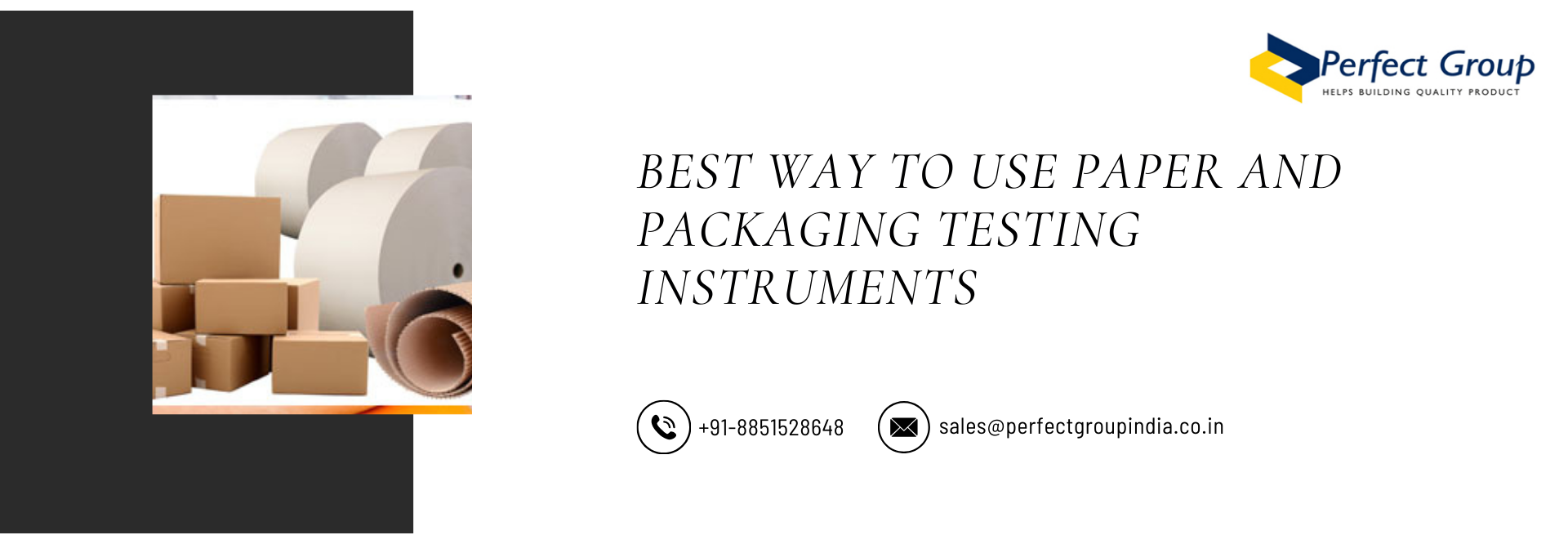Best Way To Use Paper And Packaging Testing Instruments
Introduction
The first step in using paper and packaging testing instruments properly is to choose the right tool for your particular needs, such as checking seal strength or pressure. For accuracy to be maintained, be sure to check it regularly. To avoid mistakes, operators should have complete instruction in handling and protocol. During testing, following industry standards provides consistent outcomes. Finally, in order to enhance packing performance and make wise quality control decisions, regularly examine and document test results.Understanding Packaging Testing Instruments
Specialized instruments called paper and packaging testing instruments are used to assess the strength, performance, and safety of packaging materials. These tools help producers in assessing variables such as seal authenticity, pressure, bursting strength, and top-load capability. Typical instruments include the following:- Drop Tester: Performs drops from different heights to assess a package's ability to survive the pressure.
- Box Compression Tester: Compares a box or container's strength against arranged objects.
- Secure Seal Tester: Bottle, jar, and other container sealing quality is checked by a Secure Seal Tester.
- Bursting Strength Tester: Paper and packaging testing instruments measures the pressure at which cardboard and paper packing materials break.
Why Proper Usage of Paper and Packaging Testing Instruments Matters
Accurate testing results are crucial for making informed decisions about packaging materials and designs. Improper usage of instruments can lead to incorrect data, resulting in subpar packaging that fails during real-world conditions. Following best practices ensures reliable results, consistent quality, and compliance with industry standards.Best Practices for Using Paper and Packaging Testing Instruments
1. Understand the requirements for testingKnow exactly what needs to be examined before you begin any test. Whether it's for weak, recyclable, or heavy goods, different products require appropriate packaging. To choose the best instrument for the job, specify the exact tests you require, such as impact resistance, compressive force, or leak testing.
2. Pick the Appropriate Test Instrument
Paper and packaging testing instruments aimed to measure certain parameters are needed for every packaging test. For example, a Box Compression Tester is perfect if you're checking the relative strength of boxes. On the other side, a Secure Seal Tester is the best option for seal quality. Accurate and trusted findings can be assured when the right instrument is used.
3. Consistent Maintenance and Verification
Accurate readings depend on regular Verification and maintenance. To keep them exact, instruments need to be maintained and certified on a regular basis. paper and packaging testing instruments readings are compared to standard values through testing. Routine maintenance can also avoid unexpected malfunctions during crucial testing periods. This includes cleaning and examining components.
4. Instruction on Safe Handling for Operators
For operators to produce accurate test findings, they must receive enough training. Make certain that everyone conducting the testing is experienced in using the equipment, understanding the protocols, and decoding the findings. Everything from preparing the instrument to collecting and analyzing the test data should be included in training.
5. Follow standard testing protocols
It is possible to obtain consistent and similar results by using standard testing procedures. For example, the criteria for different packaging tests are provided by industry standards like ASTM and ISO. For maximum accuracy and prevent mistakes, make sure you stick to certain set procedures when producing data.
Common Mistakes to Avoid When Using Paper and Packaging Testing Instruments
1. Avoiding Measurement TestsAvoiding regular testing can produce incorrect findings, which could influence bad packing choices. Make sure that all of the instruments have been tested on a regular basis and anytime you observe differences in the results.
2. Avoiding Instrument Repair
Avoiding routine maintenance could result in instrument wear and tear, which can cause malfunctioning machinery and inaccurate test results. To make sure your instruments are operating at our best, put in place a regular maintenance schedule.
3. Different Testing Facilities
Test results might be influenced by environmental conditions such as humidity, lighting, and temperature. Tests should be conducted in controlled settings to minimize variables and provide consistent outcomes.
4. Making use of Just One Test Approach
Even while a single test may provide insightful information, depending just on one technique can result in an insufficient understanding of package performance. Applying several tests provides a more thorough assessment of packing quality.
Advantages of Proper Use of Packaging Testing Equipment
The testing device from The Perfect Group is adaptable and useful for a variety of beverage kinds.1. Improved Product Protection
Producers can create packaging that provides greater protection for items by following best practices, which lowers the risk of damage occurring during handling and shipping.
2.Deference to Industry Standards
Testing that is accurate allows for packaging that follows important industry requirements, avoiding legal problems and complaints from customers.
3. Financial Savings
Minimizing packaging errors lowers product returns, waste, and damage claim expenses. Long-term cost savings for firms can be achieved by investing in appropriate testing.
4. Better Brand Image
Providing goods in top shape builds brand loyalty and develops consumer trust. A brand's reputation in the marketplace is improved by honest packaging that works properly every time.
